Corporal Donald Thornton McGregor, 18214573 POW
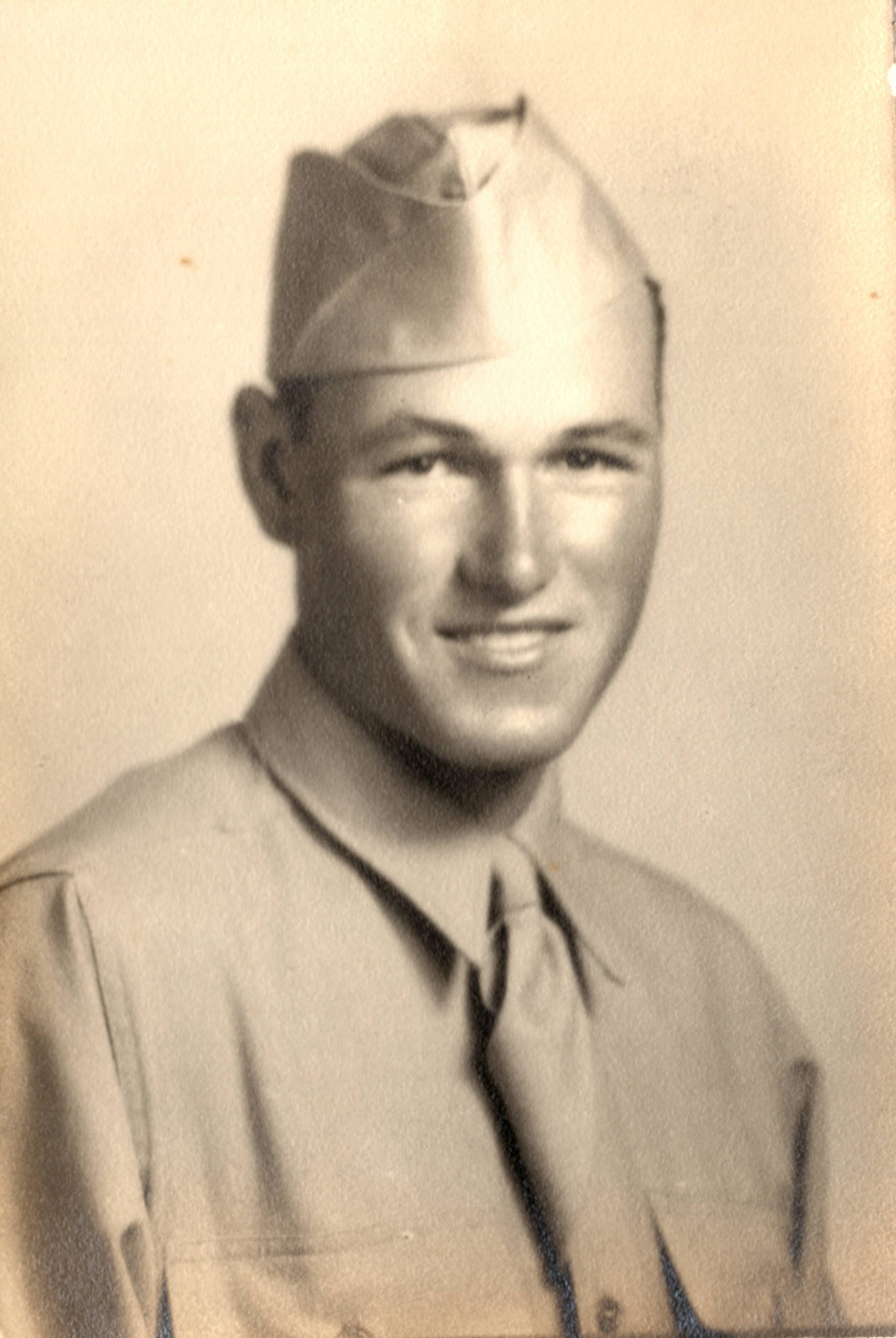
Corporal Donald Thornton McGregor, 18214573 POW US Army infantry. He was born March 20, 1924 the son of Reverend Marshall Thornton McGregor and Flora Welch McGregor of Waldo, Texas, and 1600 Park, Waco Texas. He was also the nephew of SK l/c Robert T. McGregor.
Donald graduated from Mertzon High School in West Texas in 1941. He attended Baylor University for 1 year and on November 17, 1942 he entered the US Army, at the age of 18. At the time of his enlistment he was 5 feet 8 inches had brown eyes and hair and weighed 150 pounds. Don joined the reserve corps as part of the army specialized training program (ASTP) at Texas A&I in Kingsville, Texas. He took his ASTP basic training at camp Maxey Texas. In the spring of 1944, when the ASTP program was disbanded he and the entire Texas A&I, ASTP student body reported to Camp Howze, Texas. Don was assigned to 1st gunner in the 1st platoon, 1st section, Company D, 409th infantry regiment, 103rd Infantry Division. He arrived in Marseille, France on October 20, 1944 a bored the USS Monticello. He Fought in the Rhineland and Alsace Campaigns. On December 1, 1944 his company took Sélestat France, On December 2, 1944 when the German counter attack against Sélestat France happened, Donald was in a house with other men from his platoon these men were Ted Jenkins, Privates Jeff Jennings, Les Klie, Robert Kokensparger, Zack Sigler, Sergeant Vernon Swanson, Robert Peterson, Jim Price.
After a German tank fired 2 rounds in to the house, which destroyed their machine-gun, instantly killed Sergeant Vernon Swanson, and seriously wounded Jim Price and Zack Sigler and opened a large hole, and the third round caused parts of the house to collapse on those left inside. After the tank fire, Privates Jeff Jennings, Les Klie, Robert Peterson, Robert Kokensparger, Ted Jenkins and Donald McGregor went out of the house through a rear window and the hole. Unfortunately, McGregor and Jenkins, the last two men to climb out, found German soldiers waiting for them and were captured. Those ahead of McGregor and Jenkins escaped to temporary safety back across the river. Donald spent the remainder of the war as a POW at Stalag 12A and Stalag 9B. He stated “We were placed in work crews and were forced to dig tunnels in the mountainside. They were attempting to construct an underground aircraft factory that would be impervious to allied bombing. Six days a week (Sundays off), we were marched to our work site several miles away. We worked 8 to 10 hours and then marched back to the camp, arriving about dark. We never received lunch and received only a piece of bread and some kohlrabi (a sort of cabbage) soup for our efforts.”
He was awarded the Combat Infantry Badge, the Purple Heart Medal (PHM), The Bronze Star Medal, The Good Conduct Medal, the European Theater of Operations Medal with two battle stars, American Theater of Operations medal, the Prisoner of War Medal, and the World War Two Victory Medal.
After the war he returned to Baylor and graduated in the spring of 1946. He marred Carlene Barnhill. He also graduated from Southwestern Theological Seminary in Fort Worth. Donald started his journalism career at the Midland Reporter Telegram. By 1974, Donald became the associate editor of the Mississippi Baptist Record. In 1976, he became the editor. He was elected President of the Southern Baptist Press Association for 1981-82. In December of 1990, Donald retired from the Baptist Record as editor emeritus, and lived in Mesquite Texas. Donald died on June 30, 2015 in Richardson Texas. He is burred with his wife Carlene at the Dallas-Fort Worth National Cemetery.
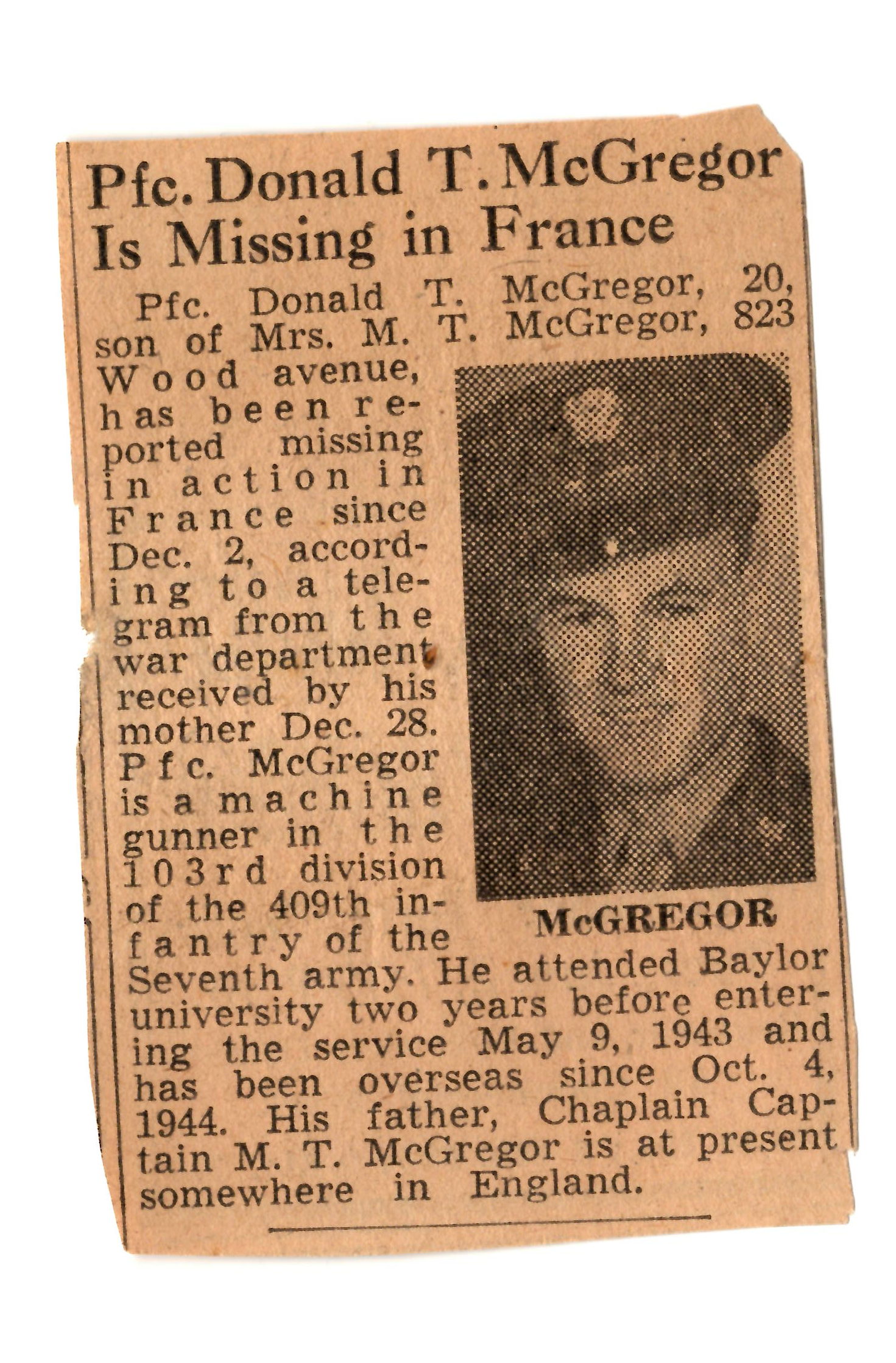
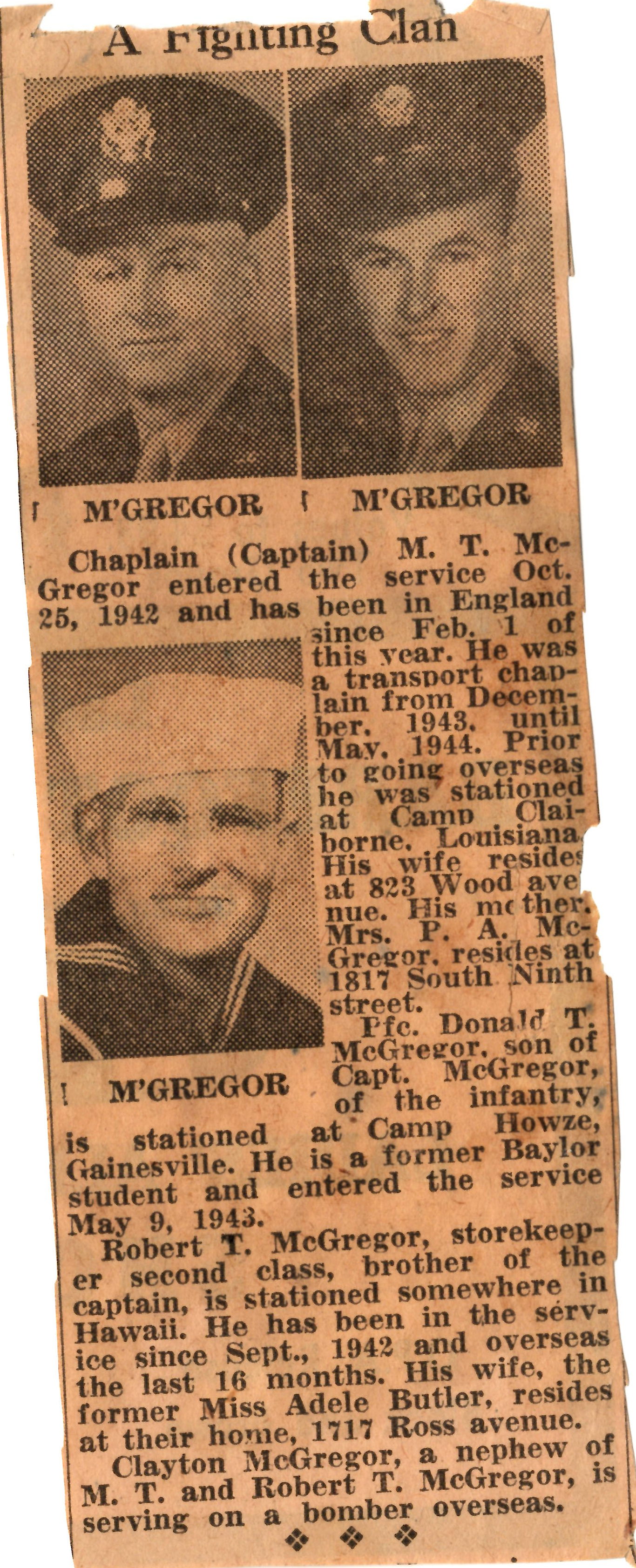
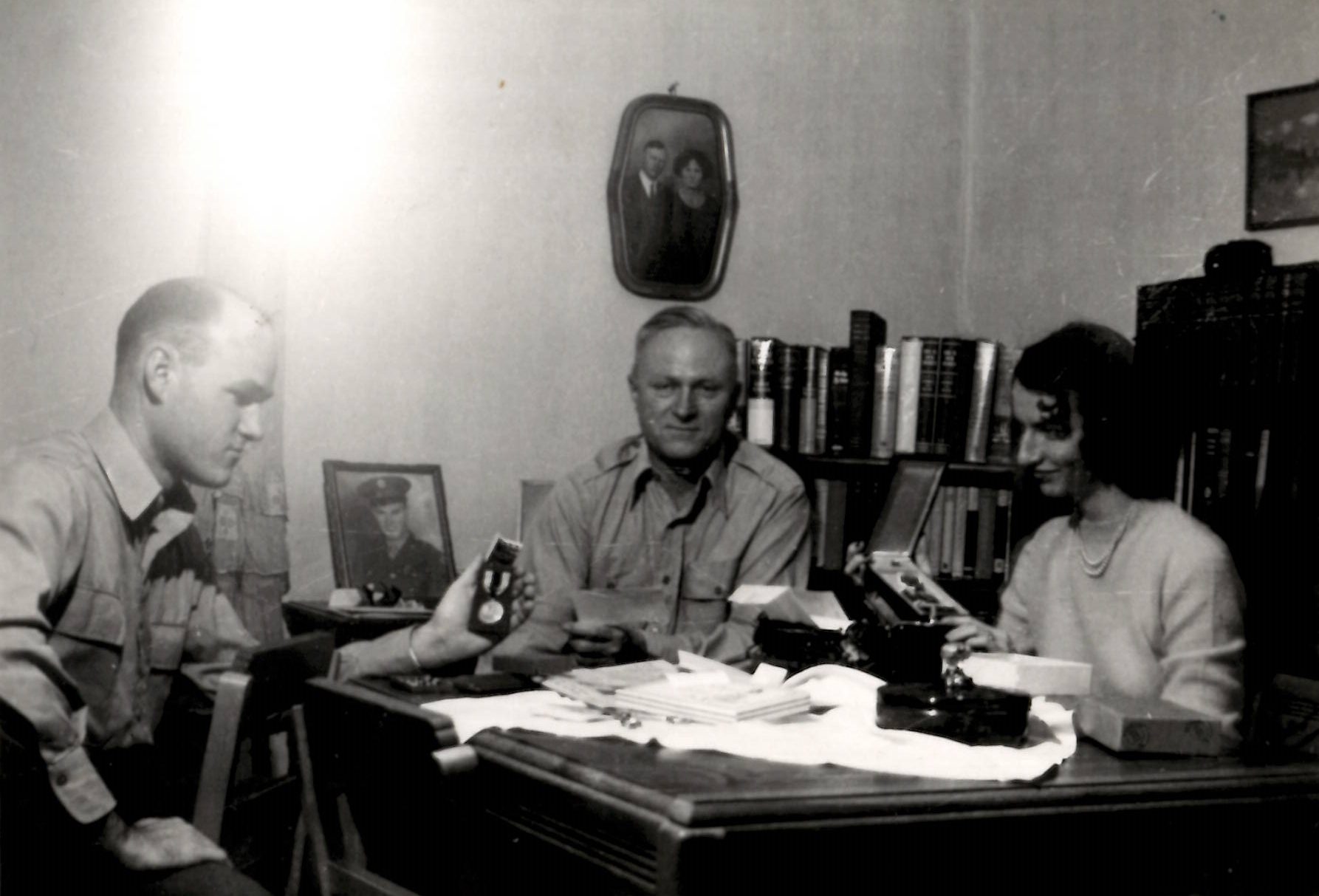
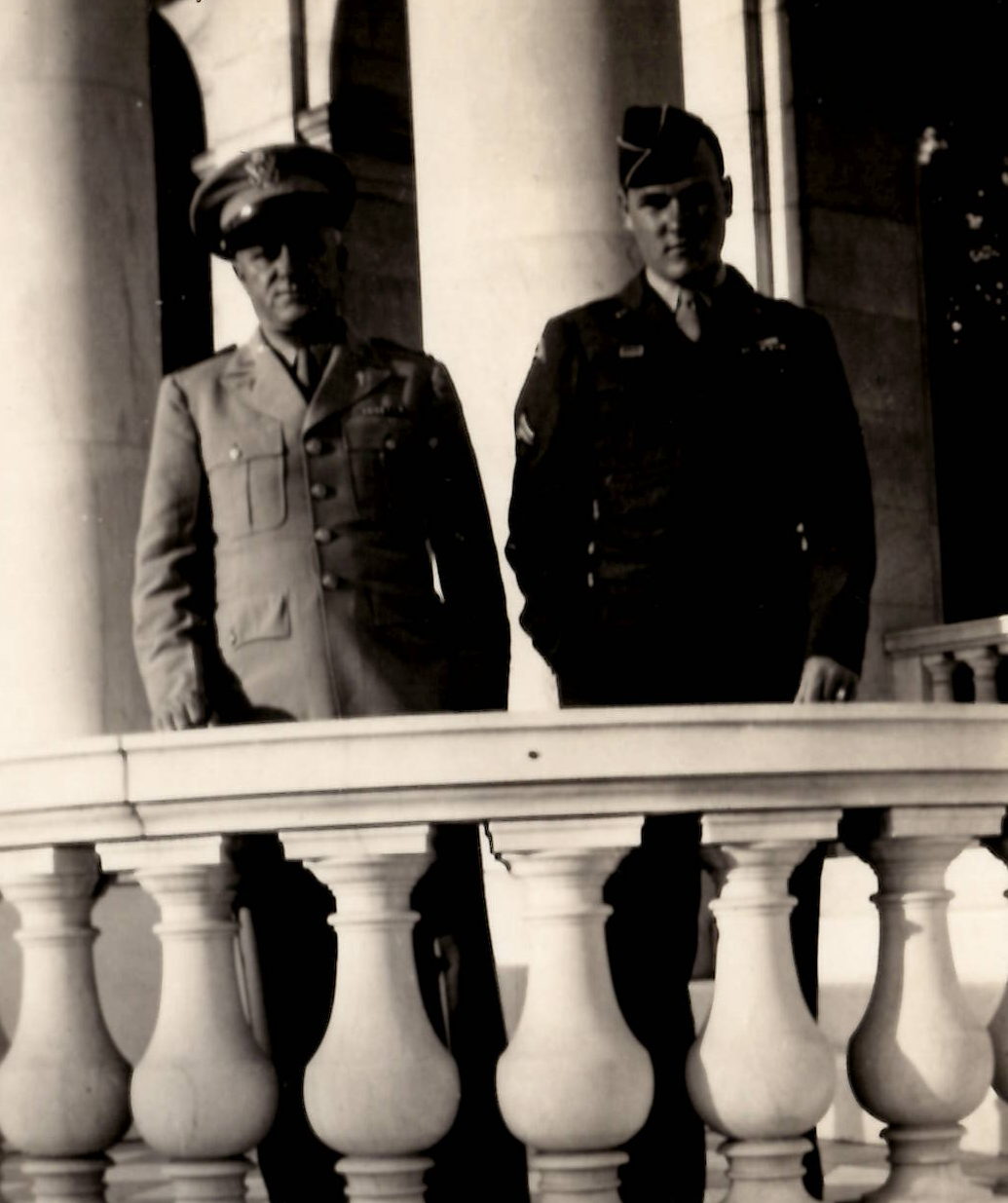
sources:
1- Photographs records news clippings and other documents from CPL Donald Thornton McGregor estate sale
2- The Men and Women in World War Two from McLennan County Texas
3- the Texas, Birth Certificates, 1903-1932
6- One Man’s Journey DONALD T. MCGREGOR
7- WWII Draft Cards
8- 103rdcactus.com/bio/409%20D/409D%20McGregor/409%20D%20Donald%20McGregor.htm
Below is a Corporal Donald Thornton McGregor accounts from the war. From 103rdcactus.com/bio/409%20D/409D%20McGregor/409%20D%20Donald%20McGregor.htm
Don’s remembrance of Selestat.
The 409th approached Selestat from the northwest on December 1st, 1944. 1st Battalion (Companies A, B, C & D) stopped beyond the Giessen River Bridge leading into Selestat. We were told we would stay there to prevent any German units from coming out in our direction. The schedule was to wait until the next day, Dec. 2, and three divisions would attack Selestat. They were the 103rd, 36th, and the 14th armored. I was secure in my own little foxhole beneath the pavement in the road leading into Selestat.
All of a sudden we heard rifle fire and bazooka ammo going off. A rifle company, Co. B, didn’t wait until the next day. They were ordered to enter Selestat on the night of Dec. 1st to take some houses on the outskirts. That was contrary to the orders we’d been given.
Capt. Dempsey’s Company B, Rifle Company, took six houses. About 9 o’clock, we were ordered to join the rifle company. Our Platoon Leader, Lt. Louis Daloisio, insisted on it. We were about half way across the bridge when our section Sgt (Michalski) showed up. “Where in the Hell are you going,” he demanded. We were blessed by having some pretty good sergeants leading us. He told us to get back in the foxholes where we belonged. Here came Daloisio, “Where are you going?” We replied, “We are going back to the foxholes.” The Lt. said, “Get into those houses.” Michalski objected to this order but, as all good soldiers do, bowed to the Lt’s rank and followed the order. 1st Lt. Withum was our D Company Commander, though he played no part in this. My D-Company – 1st platoon had to tag along with company B. (The machine gun platoons were at the mercy of the rifle company commanders. We attached to them.) So much for feeling secure in my foxhole! The rifle company used up their entire bazooka (anti tank) ammo taking the houses. They had found that bazooka ammo was as good for taking houses as it was for tanks.
I was in the first house on the right hand side. We wouldn’t have any tanks until the next morning. We were all right for six hours. Then we heard some tanks fire up. We didn’t have any bazooka ammo. We were defenseless against tanks. The tanks came down the street and parked in front of the houses. The first thing the lead tank did was blow up the bridge. We were trapped!
After they blew up the bridge, they turned their .88 millimeter guns to the houses. They were sitting point-blank at curbside and we were ‘sitting ducks’. I thought I had drawn my last breath. The tanks were supporting 600 to 800 German infantry. Therefore, the tanks first targets were the Heavy Machine Guns. OURS!
The first shot from the tanks blew apart my machine gun. The second shot blew a hole in the back of the house. Then the tanks blew some timbers from the roof. I was dazed and wounded by shrapnel. After I came to, I looked for a way to get out of the house. I noticed the hole in the back wall toward the river. Four others of my squad jumped out the hole and made it to the river. I jumped out the hole and was intending to run for the river, but I was too late. German infantry were already standing there with automatic weapons. Being a 1st gunner, I carried only a .45 pistol. Though it seemed like an eternity, the one-sided battle couldn’t have lasted more than a few minutes. Just like that, I was a POW!
As a result of that night’s action, Co. B counted 98 missing in action, 1 killed in action, and 2 wounded in action. Co. D bore the brunt. We counted 18 missing in action, 9 wounded in action and 3 killed in action. My combat days were over, but the fight for survival was to become more intense!
POW
We were herded across the Rhine and forced to dig trench emplacements for the defense of a German position. This, of course, was contrary to the Geneva Convention, but we were in no position to protest. Eventually, we were placed in box cars and made a long trip to a POW camp in Limburg, Germany (Stalag XIIA). Our diet consisted of what we called grass soup. The rumor was that when we got to a permanent camp, the diet would improve. That never happened. Our next train ride placed us in a camp near Muhlberg (Stalag IV-B) for Christmas. On January 2, 1945, I arrived at my new home. We arrived at Kamnitz, Czechoslovakia in the Sudeten Mountains. (After the Germans were defeated, the Czech’s changed the name from Kamnitz to Ceska Kamenice) By this time, there was only Ted Jenkins left with me from my outfit. They’d managed to scatter us out pretty good. At this location, we were stripped of our olive drab clothing. Our winter protective clothing was replaced with clothing that was inadequate, to say the least, for winters in the mountains. Many of us suffered from frostbite. We were placed in work crews and were forced to dig tunnels in the mountainside. They were attempting to construct an underground aircraft factory that would be impervious to allied bombing. Six days a week (Sundays off), we were marched to our work site several miles away. We worked 8 to 10 hours and then marched back to the camp, arriving about dark. We never received lunch and received only a piece of bread and some kohlrabi (a sort of cabbage) soup for our efforts.
Finally, on May 8th, our German guards opened the camp gates and told us we were free to go. There were no American liberators in site. We were told that we were on our own to get back to our lines, or we could wait and be liberated by the Russians. No Thanks! By this time, we were all weakened by the hard labor and sparse nourishment. I had gone from 130 pounds to under 100. However, we left the camp on May 9th and spent the next 9 days getting back into American hands. We would have never made it had it not been for the German/Czech civilians who would come out of their houses to feed us. Of the 200 of us that originally arrived at the camp, only 175 survived.